





Lythrum
Application instruction:
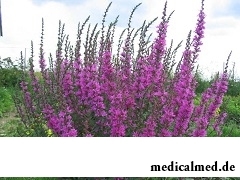 Lythrum – the Loosestrife family with direct we lay a perennial herbaceous plant of family also a powerful ligneous root. Other national names of this plant – плакун – a grass, a podberezhnik. The grass the Lythrum in moderate zones of Eurasia grows, it is widespread in Russia, Belarus, the Caucasus and Ukraine. Generally this plant can be met on swamps, a coastal strip, water meadows. In total more than 15 types of the Lythrum, but the most widespread – the Lythrum ivolisty (which has curative properties). This plant a good melliferous herb, is possible cultivation of the Lythrum on garden sites.
Lythrum – the Loosestrife family with direct we lay a perennial herbaceous plant of family also a powerful ligneous root. Other national names of this plant – плакун – a grass, a podberezhnik. The grass the Lythrum in moderate zones of Eurasia grows, it is widespread in Russia, Belarus, the Caucasus and Ukraine. Generally this plant can be met on swamps, a coastal strip, water meadows. In total more than 15 types of the Lythrum, but the most widespread – the Lythrum ivolisty (which has curative properties). This plant a good melliferous herb, is possible cultivation of the Lythrum on garden sites.
Medicinal properties of the Lythrum
This plant has tannic, wound healing, analgetic, antiseptic, antiinflammatory, kroveostanavlivayushchy and diuretic properties.
For the medical purposes use all parts of the Lythrum – roots, stalks, leaves, flowers and seeds. Roots of this plant are rich with tannins, its seeds contain alkaloid (a glycoside литрарин), leaves – a glycoside саликарин, essential oils, pitch. Flowers of the Lythrum are rich with flavones.
Use in traditional medicine
In traditional medicine a grass the Lythrum is applied at treatment of acute intestinal infections, chronic gastritises and colitis. The knitting and antiinflammatory effects of this plant do it irreplaceable at digestive tract diseases. Also it is used at fever, catarrhal diseases, diseases of the sexual sphere.
The lythrum is applied to treatment of toxicosis of pregnant women (as an antiemetic). This medicinal plant is a part of some homeopathic medicines. Broth of the Lythrum possesses styptic action and helps with a stop of bleedings of various origin (uterine, gastrointestinal, outside).
Infusion of a grass and flowers of this plant is used outwardly at skin diseases (for example, eczema), and also for washing of purulent wounds.
Tea with the Lythrum well helps at neurologic diseases, a depression, hysteria, an asthenic syndrome. Broth of this plant is added to bathtubs at treatment of epilepsy by national methods.
Broths, infusions and tinctures of the Lythrum are prepared from roots or tops of bloomer.
To prepare infusion it is necessary to fill in 5 g (1 tsp) of the dry crushed grass with 250 ml of the boiling water and to insist within 4 hours. After that infusion is filtered and accept inside 1/3 glasses 3 times a day.
Tincture of the Lythrum prepares as follows: the crushed part of a plant (roots, stalks, flowers) is filled in with 76% alcohol (or vodka) in the ratio 1:10 and infuses within 2 weeks in the dark cool place. After that it is necessary to filter and accept solution till 20-40 drops 3 times a day to food (previously to part in 50 ml of water).
Broth of the Lythrum prepares from roots. For this purpose 1 teaspoon of the crushed raw materials is filled in with 250 ml of water, cooks within 5 minutes on slow fire. Then broth infuses within 1 hour, is filtered. It is necessary to accept broth on ¼ glasses 3 times a day to food. Broth of the Lythrum is accepted as diuretic at hypostases and diseases of kidneys.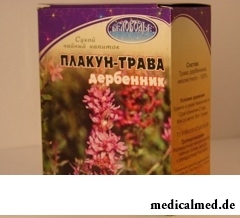
It is possible to make wound healing means of fresh leaves. For this purpose leaves are crushed in gruel and put on area of a wound.
Cultivation of the Lythrum is possible also in artificial conditions on "pharmaceutical" beds, he loves the neighbourhood with mint, an inula, a marjoram and a motherwort.
Contraindications to use of the Lythrum
It is not recommended to people to use this plant with the increased risk of a tromoobrazovaniye, at disturbances of coagulant system of blood. It is also not necessary to apply the Lythrum grass at treatment of atonic locks at elderly persons. At arterial hypertension this plant needs to be applied with care as the lythrum leads to vasoconstriction (vasoconstriction).
The American scientists made experiments on mice and came to a conclusion that water-melon juice prevents development of atherosclerosis of vessels. One group of mice drank usual water, and the second – water-melon juice. As a result vessels of the second group were free from cholesteric plaques.

Venereal diseases in medicine are called the infections which are transmitted preferential sexually, now they are so...
Section: Articles about health
For anybody not a secret that the modern person eats not as his ancestors. For the last 100 years in broad access there were absolutely new products which are result of use of the latest technologies in food production. Significantly changed спо...
Section: Articles about health
The problem of diagnosis was and remains to one of the most important in medicine. From that, the reason of an indisposition of the patient will be how precisely defined, eventually success of treatment depends. In spite of the fact that the majority of the diagnostic methods applied in official clinical practice has very high informational content and reliability, mistakes directed by diagnoses nevertheless are not excluded....
Section: Articles about health
Life of the modern child is extremely active and difficult. Information strain which is experienced by the school student and did not dream the pupil...
Section: Articles about health
Iodine - one of thirty most important microelements in our organism. The main role of iodine consists in synthesis of thyroid hormones of a thyroid gland - the substances which are responsible for the majority of exchange processes of an organism. It is known that thyroid hormones consist...
Section: Articles about health
Among a set of the perfumery and cosmetic goods which are released today the special group is made by the means containing antibacterial components. Such types of gels, shampoos, soaps, creams, lotions and other products are positioned by manufacturers as a panacea from all diseases caused by pathogenic microorganisms. The unlimited and uncontrolled use of similar means becomes result of trustfulness of the buyers hypnotized by persuasive advertizing sometimes. Many spetsial...
Section: Articles about health
About influence of fasting days on an organism it is told much – both about advantages, and about shortcomings. It is considered that fasting day...
Section: Articles about health
Tea is loved and use almost everything. This drink has tonic properties, contains the tannins capable to suppress activity of causative organisms. Recently great popularity was gained by teas with vegetable additives. Лечеб...
Section: Articles about health
High temperature - a frequent symptom of such widespread diseases as a SARS, quinsy, pneumonia, etc. To reduce heat, having facilitated a condition of the patient, doctors recommend to accept antipyretics, however their use is not always possible. Too frequent use of these drugs can lead to allergic reactions, and also overdose, causing poisoning. It happens also that there are no antipyretics simply in the house. In these situations it is pertinent to use it...
Section: Articles about health
The varicosity has familiarly many, statistically, this disease more than a half of all adult population. As...
Section: Articles about health
Condition of lips (their morbidity, outward) – one of indicators of health of the person. The peeling, dryness, pallor, and also cracks in corners of a mouth can be not only the cosmetic shortcoming which arose owing to physical damages and weather having sent away...
Section: Articles about health
Bulimia and anorexia, are heavy deviations of a feeding behavior, become a cause of death of patients much more often than all other nervous breakdowns combined. In 60% of cases two illnesses accompany each other: patients feel horror before danger of set of excess weight and try to refuse as often as possible food, but periodically suffer from attacks of sudden hunger and an uncontrollable overeating. Each patient with anorexia and bulimia needs the help qualified пс...
Section: Articles about health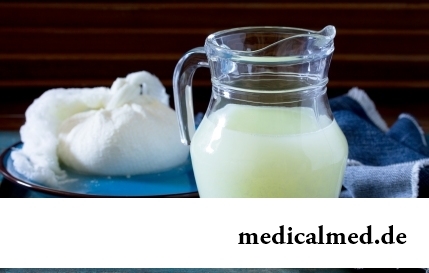
Milk and products of its processing by right occupy one of the main places in a diet of the modern person. They contain necessary...
Section: Articles about health
Residents of big cities quite often have a disease which is known as the syndrome of chronic fatigue (SCF) today. This illness affects the people belonging to various social and demographic groups and living on all continents. Most of all SHU to a podverzha...
Section: Articles about health
Musicotherapy – a treatment method which caused and causes a set of a controversy concerning its efficiency. However the facts are relentless: during the numerous researches curative impact of music on an organism was scientifically confirmed. Since then in a number of the countries the technique is included complex therapy of diseases of cardiovascular and respiratory system, dorsodynias and a backbone, psychosomatic disturbances and many other illnesses. The musicotherapy in a pedi is especially widely applied...
Section: Articles about health
The mankind knows that some toxins at intake in the minimum quantities have therapeutic effect...
Section: Articles about health
Sugar - the digestible refined product which is not of special value for an organism of the modern person. The use of sugar in food is based rather on the psychological dependence caused by desire to indulge itself with something tasty, and in дальнейш...
Section: Articles about health
For the city dweller the fitness is the most convenient sport. It is enough to acquire the subscription to the gym to get access to various apparatuses and an opportunity to train under the leadership of the experienced consultant. Many consider fitness the best way of maintenance of physical shape and receiving dynamic loads which the people occupied preferential with brainwork so need. Nevertheless, representations of most of consumers of similar services about специф...
Section: Articles about health
The pine is one of the most widespread plants of our woods. Its needles and pitch not without reason called by "gallipot", since ancient times испол...
Section: Articles about health
Subfebrile temperature call fervescence to 38 degrees, and subfebrile condition - existence of such temperature over 3 days, and quite often it happens without the visible reasons. Existence of subfebrile condition - a strong indication of disturbances in an organism which can...
Section: Articles about health
The words "disease" and "patient" not without reason come from one root – "pain". As a rule, symptoms of illnesses thoroughly spoil to patients life. However from this rule there are exceptions. Some diseases are shown by signs which can cause even positive emotions. It is a pity only that the majority of such illnesses are heavy and incurable....
Section: Articles about health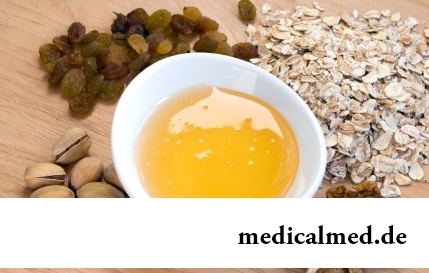
Let's begin with the fact that a separate illness which is called "adjournment of salts", just does not exist. In practice this household name of plank beds...
Section: Articles about health
Water with a lemon - idle time in preparation drink which supporters of a healthy lifestyle already managed to appreciate. Used in a warm look and on an empty stomach, it is one of the most useful prophylactics allowing to prevent tens з...
Section: Articles about health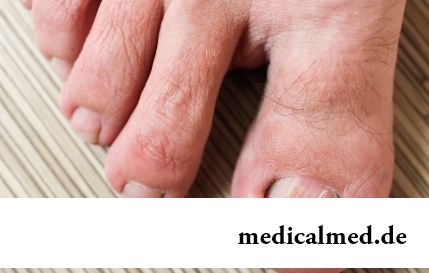
The word "onikhokriptoz" is unfamiliar to most of people, meanwhile quite so physicians call very widespread problem: the growing of edge of a nail into surrounding fabrics causing inflammatory process. Usually the illness affects thumbs of legs, and is followed by reddening, hypostasis, and in the started cases – release of pus. Patients complain of the pain amplifying when walking, problems with the choice of footwear....
Section: Articles about health
Visit of doctors – business not the most pleasant, and many people do not hurry to undergo necessary planned inspections. Such behavior...
Section: Articles about health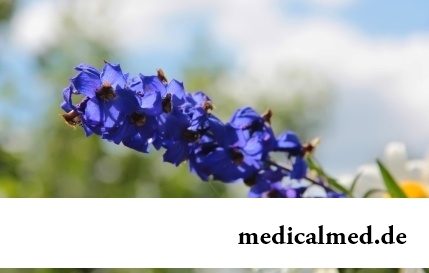
It is impossible to imagine human life in which there would be no plants. Practically in each apartment and any production room there are window plants, millions of people with pleasure are engaged in gardening and truck farming, many citizens пр...
Section: Articles about health
Modern footwear is extremely various. It stopped being only protection for legs long ago. Today shoes, boots, barefoot persons choose not so much proceeding from their convenience and functionality how many being guided by outward, brand and an opportunity to add with them a stylish dress. At the same time, buying footwear, think of its safety a little. Meanwhile, many popular models can do essential harm to health....
Section: Articles about health
